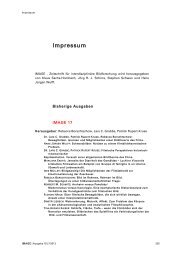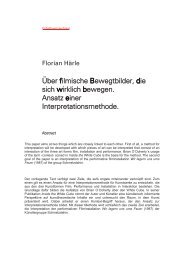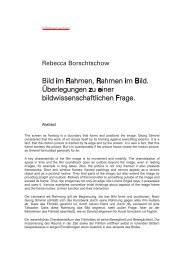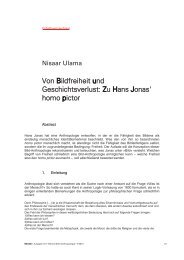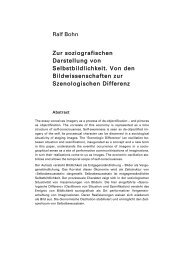Image 4 - Gesellschaft für interdisziplinäre Bildwissenschaft
Image 4 - Gesellschaft für interdisziplinäre Bildwissenschaft
Image 4 - Gesellschaft für interdisziplinäre Bildwissenschaft
Erfolgreiche ePaper selbst erstellen
Machen Sie aus Ihren PDF Publikationen ein blätterbares Flipbook mit unserer einzigartigen Google optimierten e-Paper Software.
MARIO BORILLO/JEAN-PIERRE GOULETTE: COMPUTING ARCHITECTURAL COMPOSITION FROM THE SEMANTICS OF „VOCABULAIRE...1. From the language analysis to the mental universe of thedesignerUntil a recent date, the scientific research was reticent to face the problems posed by the de-sign(creation) of sensory forms (Borillo & Sauvageot 1996); and indeed, everything indicates that thedifficulties necessary to surmount in order to describe those processes are considera-ble as theywill probably request not only the whole of the experimental cognitive disciplines, from psychology(for the exploration of the mental sphere) to neurosciences (would this be only for the sensorimotorcomponents of the processes), but also their necessary formal, ma-thematical, logical andcomputational complements, without which there would be possible neither theorizations nor simulations.To tell the truth, the actual problems can only be posed after having operated a wholeof adequate restrictions on a universe of such a complexity. In this immense field of investigation,the thread that we propose to follow here in order to pene-trate into the mental universe of the designeris the one of language (Jackendoff 1992). Fur-thermore: since our objective in the long termis, more specifically, to comprehend the genesis of architectural forms, we are more particularlyinterested in the means that language offers to express the space concepts that are requestedfrom that point of view.To define a »strategy of access to the mental universe of the designer by the analysis of the language…« is to assign to the latter the two functions:----First, the analysis of language is conceived of as a medium giving access to certain characteristicmental processes involved in architectural design.In addition, insofar as the significance of the expressions in language can be representedformally, it could be possible to define and formalize in logico-mathematical terms thesemantics of expressions of the architect‘s language.Starting from these representations, it becomes possible to simulate, by ›qualitative spatial reasoning‹,some processes of design expressed in the architect’s language.Our linguistic source of knowledge associated to the architectural elements and their compositionis the classical Vocabulaire de l’architecture by Pérouse de Montclos (Pérouse de Montclos1972).2. A formal semantics of the vocabulary of architecture2.1. Some principles of architectural design and compositionThe principles of architectural composition are based on a set of very particular concepts that arerevealed by the analysis of the terminological vocabulary of the elements of architecture (Goulette1997). Among these concepts, one finds mainly:IMAGE I Ausgabe 4 I 7/2006 48


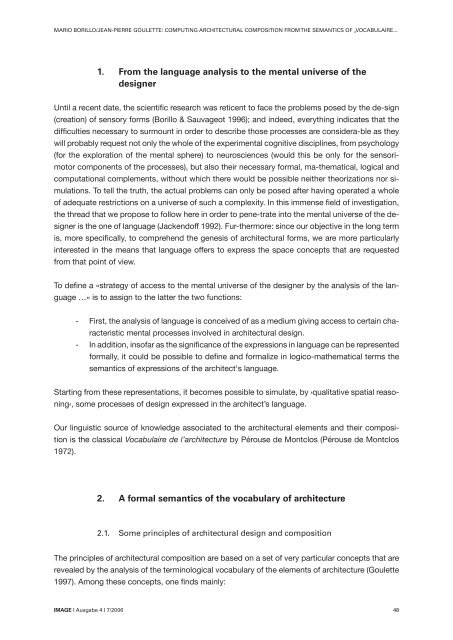
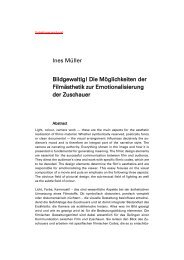
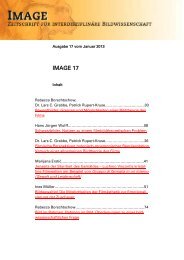
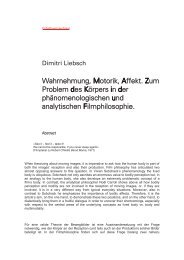
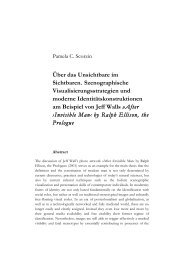
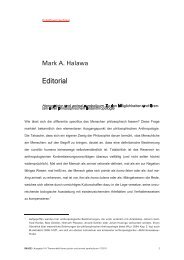
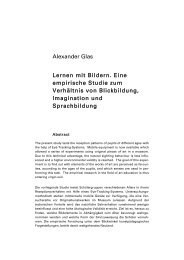
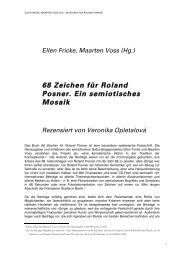
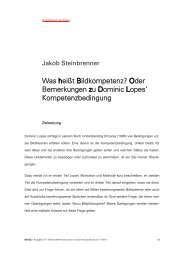
![image 11 [pdf] - Gesellschaft für interdisziplinäre Bildwissenschaft](https://img.yumpu.com/41525154/1/184x260/image-11-pdf-gesellschaft-fur-interdisziplinare-bildwissenschaft.jpg?quality=85)
